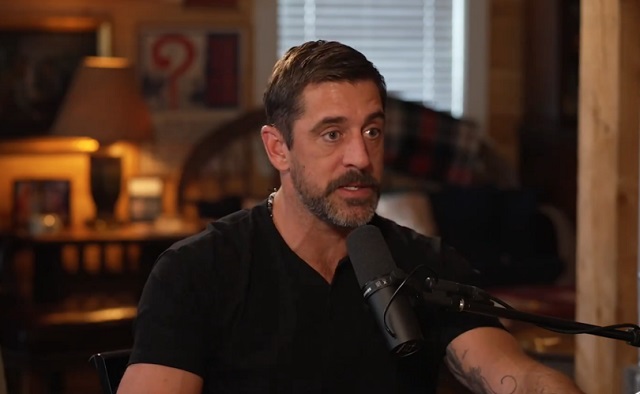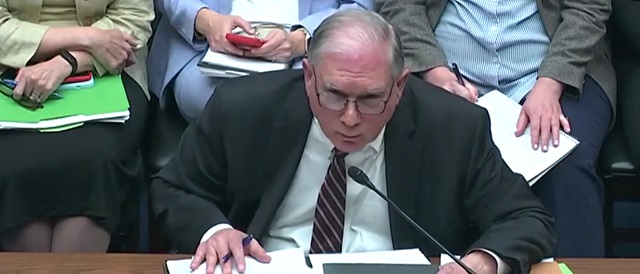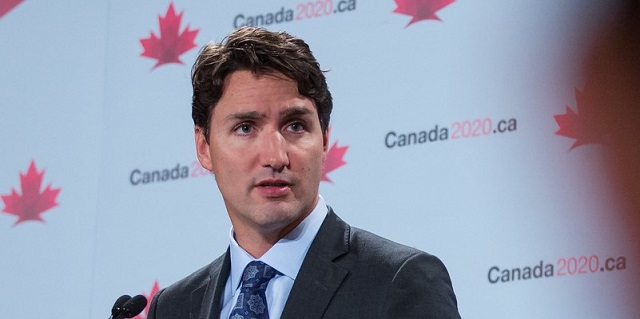Environment
Official Temperature Data Aren’t ‘Data’ and Shouldn’t Be Used to Restrict Freedom

From Heartland Daily News
It is becoming increasingly clear that the temperature data the U.S. government and many other governments use to predict catastrophic climate change, the data from surface temperature stations, aren’t accurate.
To paraphrase Elizabeth Barrett Browning’s Sonnet 43: How bad is the surface station record? Let me count the flaws.
Even its climate alarmist defenders acknowledge that surface station data runs too hot. To make matters worse for the alarmist cause, the overheated surface station data are still lower than what climate models say the temperatures should be based on the amount of carbon dioxide in the atmosphere. This fact strongly suggests the assumed climate sensitivity to a doubling of atmospheric carbon dioxide of pre-industrial levels built into models is also way too high.
Further evidence that the surface station data are flawed stems from the fact that the surface station readings do not match the temperatures recorded by global satellites and weather balloons, two alternative temperature sources whose data sets closely track each other.
The Heartland Institute has exposed instances in both the United States and abroad wherein official agencies tamper with past temperature data at pristine stations. Not only have these agencies been caught adjusting records to appear cooler than what was actually recorded, they have also manipulated temperatures upward, making the recent warming trend appear steeper and more severe than it actually is.
I’ve written extensively about the so-called adjustments made by corrupt NOAA scientists in 2015, just before the Paris climate treaty negotiations – mixing data from unbiased ocean buoys with heat-biased temperature measurements taken from ships’ engine water intake inlets, which made it appear as if the ocean was suddenly warming faster than before. More recent research claiming the oceans were heating up fast, seeming to confirm NOAA’s manipulated ocean claims, had to be corrected for overstating ocean warming or risk being withdrawn from publication.
My colleague, award-winning meteorologist Anthony Watts, working with a team of volunteers, independently documented serious problems with the official surface temperature record arising from the fact that the vast majority of temperature stations are poorly sited. In fact, these stations routinely fail to meet NOAA’s own standards for quality, which results in temperatures being skewed upward due to the Urban Heat Island (UHI) effect.
In 2009, and again in 2022, Watts detailed with station location data and photographic evidence just how woefully ill-sited these surface stations truly are. Stations providing official data were frequently sited in locations where surrounding surfaces, structures, and equipment radiated stored heat or emitted heat directly biased and drove the recorded temperatures higher than were recorded at stations in the same region that were uncompromised by the well-known UHI effect that is widely ignored by alarmists and official government agencies. Watts’ 2009 paper determined that 89 percent of the stations failed to meet the National Weather Service’s own siting requirements.
The media and government bureaucrats took notice of Watts’ findings, the latter producing official responses that admitted the problem, while declaring the temperature record, despite the gross violation of established rules for sound temperature data collection, was still valid and reliable.
Even while claiming “no harm, no foul,” the U.S. government shuttered some of the most egregiously sited stations highlighted in Watts’ report and established an alternative temperature network, the U.S. Climate Reference Network (USCRN), consisting of new stations with state-of-the-art equipment sited in locations unlikely to ever be impacted by the UHI effect. The temperature data set from the USCRN, for anyone who cares, displays about half the warming and a slower rate of warming than the broader U.S. Historical Climate Network (USHCN) used by the government in its official reports claiming unprecedented warming. In fact, the data from the relatively few well-sited, unbiased USHCN stations, when compared to the network as a whole, also show half the warming reported by the government. The government has accurate data, it just doesn’t report or count it as official.
Simultaneously, the government added thousands of previously uncounted temperature stations maintained by various agencies and private parties to the official network – existing stations added without any quality control protocols.
The result of the latter effort was predictably disastrous from the perspective of producing a high quality, trustworthy record of surface temperatures uninfluenced by the UHI effect. Unfortunately, Watts’ 2022 report found that the situation has become even worse. Watts and his team of volunteers discovered that 96 percent of the stations surveyed in the NOAA’s expanded network failed its own quality control standards for siting, resulting in an UHI bias in the temperatures they report.
Now, an investigative report by Katie Spence, a journalist at The Epoch Times, exposes an additional problem with the U.S. surface temperature record – a failing arguably more egregious than the issues I’ve discussed so far: many “stations” allegedly “reporting” temperatures don’t actually exist anymore, and haven’t for years. The government is just making up the data reported from many locations based on an averaging of temperatures recorded at other locations in the area.
And it’s not just a few missing stations providing made-up numbers, pointed out Lt. Col. John Shewchuk, a certified consulting meteorologist, who was interviewed by Spence for the story.
“NOAA fabricates temperature data for more than 30 percent of the 1,218 USHCN reporting stations that no longer exist,” Shewchuk told Spence. “They are physically gone – but still report data – like magic.”
To this day, NOAA still relies upon temperature “data” from the ghost stations, with an “E” for estimate.
Watts was consulted for the story as well, explaining to The Epoch Times that, “[i]f this kind of process were used in a court of law, then the evidence would be thrown out as being polluted.”
While the surface data may be the best source we have, when it is as biased or even fabricated as it is increasingly found to be, there is no way it should be used to drive public policies limiting the freedom of billions of people in their personal and economic affairs, all in the vain hope of controlling the weather in the future.
H. Sterling Burnett, Ph.D., ([email protected]) is the director of the Arthur B. Robinson Center on Climate and Environmental Policy at The Heartland Institute, a non-partisan, non-profit research organization based in Arlington Heights, Illinois.
Economy
Feds spend $3 million to fly 182 politicians and bureaucrats to climate conference

From the Canadian Taxpayers Federation
Author: Ryan Thorpe
Feds trip to COP28 in Dubai cost $3 million
The cost for Canada to send hundreds of people to COP28 in Dubai has doubled, rising to nearly $3 million, according to government records obtained by the Canadian Taxpayers Federation.
Included in those costs is $1.3 million the federal government dished out to host a “Canada Pavilion” at the summit, which featured a rapper performing a song on “climate disinformation,” while giving a shoutout to Environment Minister Steven Guilbeault.
“Nothing screams fighting climate change like flying around the world burning through jet fuel and millions of tax dollars,” said Franco Terrazzano, CTF Federal Director. “Here’s a crazy idea: maybe the feds don’t need to spend $3 million flying 182 politicians and bureaucrats to Dubai.”
The federal government paid for at least 182 people to go to COP28, held from Nov. 30 to Dec. 12, 2023, in Dubai, United Arab Emirates.
A previous report from the National Post pegged the cost for Canada’s delegation at $1.4 million.
But the bill now sits at $2,954,188, including $825,466 for transportation, $472,570 for accommodations and $295,455 for meals and incidentals, according to the records.
The records indicate the cost could rise even higher, as certain invoices and travel claims “have yet to be processed.”
Costs included $1.3 million for a “Canada Pavilion” to “showcase the breadth of Canadian climate leadership.”
At the Canada Pavilion, a Canadian rapper known as Baba Brinkman – the son of Liberal MP Joyce Murray – performed a rap on “climate disinformation.”
“Climate disinformation, get that immunization, the vaccine for bad meme infiltration,” Brinkman rapped. “Climate misinformation, it leads to polarization, which leads to radical conspiracy ideation.”
Environment Minister Steven Guilbeault also received a shoutout during Brinkman’s rap.
“Really? Hosting a rapper half-way around the world to drop rhymes at a government podium will help the environment?” Terrazzano said.
The records were released in response to an order paper question from Conservative MP Dan Mazier (Dauphin-Swan River-Neepawa).
Most of the hotel expenses came from the Dubai Marriott and the Premier Inn at the Dubai Investment Park, with rooms coming in between $150 and $400 per night.
The most expensive digs was a $816-per-night suite at the Pullman Dubai Jumeriah Lakes Towers, a “five-star hotel offering upscale accommodations.”
The Canadian delegation also handed out $650 worth of gifts during the trip.
Business
Ottawa should end war on plastics for sake of the environment

From the Fraser Institute
Here’s the shocker: Meng shows that for 15 out of the 16 uses, plastic products incur fewer GHG emissions than their alternatives…
For example, when you swap plastic grocery bags for paper, you get 80 per cent higher GHG emissions. Substituting plastic furniture for wood—50 per cent higher GHG emissions. Substitute plastic-based carpeting with wool—80 per cent higher GHG emissions.
It’s been known for years that efforts to ban plastic products—and encourage people to use alternatives such as paper, metal or glass—can backfire. By banning plastic waste and plastic products, governments lead consumers to switch to substitutes, but those substitutes, mainly bulkier and heavier paper-based products, mean more waste to manage.
Now a new study by Fanran Meng of the University of Sheffield drives the point home—plastic substitutes are not inherently better for the environment. Meng uses comprehensive life-cycle analysis to understand how plastic substitutes increase or decrease greenhouse gas (GHG) emissions by assessing the GHG emissions of 16 uses of plastics in five major plastic-using sectors: packaging, building and construction, automotive, textiles and consumer durables. These plastics, according to Meng, account for about 90 per cent of global plastic volume.
Here’s the shocker: Meng shows that for 15 out of the 16 uses, plastic products incur fewer GHG emissions than their alternatives. Read that again. When considering 90 per cent of global plastic use, alternatives to plastic lead to greater GHG emissions than the plastic products they displace. For example, when you swap plastic grocery bags for paper, you get 80 per cent higher GHG emissions. Substituting plastic furniture for wood—50 per cent higher GHG emissions. Substitute plastic-based carpeting with wool—80 per cent higher GHG emissions.
A few substitutions were GHG neutral, such as swapping plastic drinking cups and milk containers with paper alternatives. But overall, in the 13 uses where a plastic product has lower emissions than its non-plastic alternatives, the GHG emission impact is between 10 per cent and 90 per cent lower than the next-best alternatives.
Meng concludes that “Across most applications, simply switching from plastics to currently available non-plastic alternatives is not a viable solution for reducing GHG emissions. Therefore, care should be taken when formulating policies or interventions to reduce plastic demand that they result in the removal of the plastics from use rather than a switch to an alternative material” adding that “applying material substitution strategies to plastics never really makes sense.” Instead, Meng suggests that policies encouraging re-use of plastic products would more effectively reduce GHG emissions associated with plastics, which, globally, are responsible for 4.5 per cent of global emissions.
The Meng study should drive the last nail into the coffin of the war on plastics. This study shows that encouraging substitutes for plastic—a key element of the Trudeau government’s climate plan—will lead to higher GHG emissions than sticking with plastics, making it more difficult to achieve the government’s goal of making Canada a “net-zero” emitter of GHG by 2050.
Clearly, the Trudeau government should end its misguided campaign against plastic products, “single use” or otherwise. According to the evidence, plastic bans and substitution policies not only deprive Canadians of products they value (and in many cases, products that protect human health), they are bad for the environment and bad for the climate. The government should encourage Canadians to reuse their plastic products rather than replace them.
Author:
-

 COVID-192 days ago
COVID-192 days agoTucker Carlson and NFL star Aaron Rodgers discuss Bill Gates, COVID-19, US Deep State
-

 COVID-191 day ago
COVID-191 day agoTop Fauci Aide Allegedly Learned To Make ‘Smoking Gun’ Emails ‘Disappear,’ Testimony Reveals
-

 Brownstone Institute13 hours ago
Brownstone Institute13 hours agoMusk Wins Latest Censorship Battle in Australia
-

 Economy2 days ago
Economy2 days agoPrime minister’s misleading capital gains video misses the point
-

 Brownstone Institute13 hours ago
Brownstone Institute13 hours agoEnough With These Dangerous Calculations
-

 COVID-1923 hours ago
COVID-1923 hours agoThe Vials and the Damage Done: Canada’s National Microbiology Laboratory Scandal, Part II
-

 Censorship Industrial Complex2 hours ago
Censorship Industrial Complex2 hours agoAustralia passes digital ID bill, raising fears of government surveillance without accountability
-

 COVID-193 hours ago
COVID-193 hours agoMalaysian doctor goes viral after apologizing for administering COVID shots









